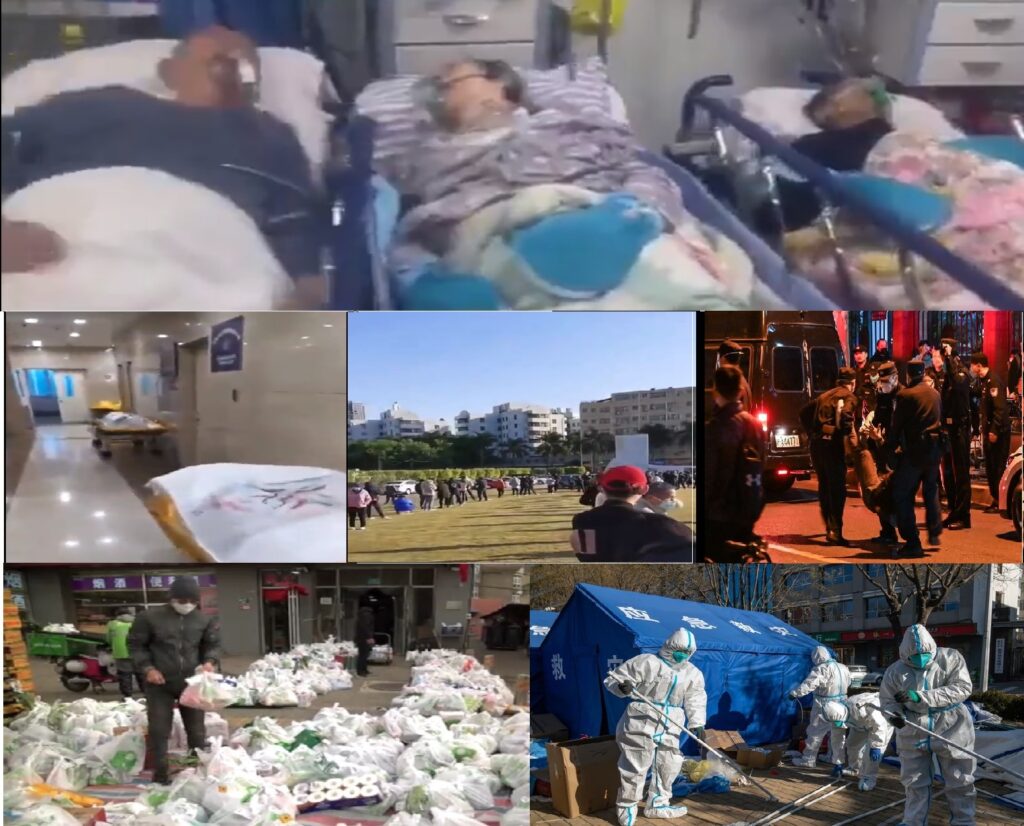
The Chinese medical system seems to be on the brink of collapse soon after the Communist regime abruptly ended the zero-COVID policy that it had strictly enforced for the past three years. However, an unprecedented outbreak of the virus had already begun in the final months of the policy.
On Dec. 7, the Chinese State Council issued the “New Ten Rules” on epidemic control, including relaxing measures such as allowing self-isolation at home and not requiring negative PCR tests for cross-regional travel. But the lack of a clear roadmap and insufficient allocation of medical resources has made it difficult for its medical system to cope with the massive wave of infections.
Beijing has been affected by a tsunami of COVID cases. Epoch Times reports that on Dec. 11, the number of fever outpatients in the city’s hospitals reached 22,000—a 16-fold increase from a week earlier. The daily emergency hotline calls exceeded 30,000, which is six times the normal call volume. Beijing resident Tang Yun (a pseudonym) told The Epoch Times on Dec. 14 that local hospitals were full, and patients were lining up outside.
According to Wigram Capital Advisors, a macroeconomic advisory group that has provided modelling to governments during the pandemic, China could see an unprecedented wave of COVID infections with the onset of winter with daily fatalities expected to peak at 20,000 in mid-March. Demand for ICUs should peak at 10 times higher than hospital capacity by late March when daily hospitalizations could hit 70,000, the study says.
In the wake of the outbreak in Beijing, the Eastern Suburbs crematorium designated for cremating COVID-infected patients is overflowing with corpses, according to the Wall Street Journal. One crematorium employee estimated that about 200 bodies were arriving daily at the crematorium, compared with the usual 30 or 40. The increased workload is overwhelming crematorium staff, many of whom are also infected with the rapidly spreading virus.
Many observers say that the deaths in mainland China are being hugely underreported. This is because of the unprecedented demand for funeral services caused by the sharp increase in deaths. Hospitals, funeral parlours and related funeral industry chains in Beijing are witnessing never-before demand and are wilting under pressure. Videos shared on social media show that morgues are overloaded with funerals being conducted throughout the clock.
As per the NPR report, Professor Ben Cowling, head of the Department of Epidemiology at the University of Hong Kong Li Ka Shing Faculty of Medicine, COVID-19 is spreading faster now in China than it did anywhere else during the pandemic. It also appears to be particularly contagious among the Chinese population. In the current outbreak in China, scientists at the Chinese National Health Commission estimate that the number is as high as 16, spreading faster than previous waves around the world.
Epidemiologist Eric Feigl-Ding claims that China could be seeing 1-2 million deaths and this could be higher if govt do not take drastic steps to curb the rise in infections. One of the reasons for the current rise in vaccine hesitancy says, Eric. He claims there is a lot of vaccine resistance in people, especially the elderly. Further casting aspersions on the efficacy of the China-made COVID vaccines, he says that 2 to 3 shots of China’s main CoronaVac may not be enough for the evasive new variants.
While most vaccines being administered in China are the CoronaVac shots, the government has approved the emergency administration of the inhalation vaccine by CanSino which is ready for rollout.
As per the NPR report, Prof. Cowling believes that the reason for such explosive transmissibility is that Chinese people have very little immunity to the virus, as the vast majority of them have never been infected. Until recently, China’s ruling communist party has focused on mass quarantine, testing, and travel restrictions to prevent the virus from spreading around the country. As a result, most people weren’t exposed to the variants that appeared before Omicron. He expressed fears that this means that almost all of the 1.4 billion people are now vulnerable to infection.
China’s Faltering Healthcare System
According to the Organization for Economic Cooperation and Development, in 2020, there were 28.2 ICU beds per 100,000 people in Germany, 21.6 in the United States, and 13.8 in Japan.
In November, the People’s Daily cited data from the State Council’s epidemic prevention and control experts as saying that China has less than 4 ICU beds per 100,000 people. Jiao Yahui, director general of the Medical Department of the National Health Commission, presented better figures, claiming that there are currently 138,100 critical care beds nationwide. Based on China’s population of 1.4 billion, this translates to 9.8 critical care beds per 100,000 people.
Beijing’s ambulance system is also being pushed beyond its limits. According to the Chinese media Economic Observer, from 11 a.m. to 3 p.m. on Dec. 14, a nursing home had been trying to solve an emergency situation for an elderly person. The staff kept calling emergency number 120 from four phones, but couldn’t get through for an ambulance because the line was always busy.
The problem of an insufficient healthcare system existed before the pandemic. By 2020, there were fewer than three doctors for every 1,000 people, lagging behind major developed countries and Brazil, a developing country.
In addition to the scarce number of doctors per capita, China’s healthcare resources are unevenly distributed. For the estimated 500 million Chinese living in rural areas, there are fewer than two doctors for every 1,000 people, while in Beijing and Shanghai, there are more than five doctors for every 1,000 people.
